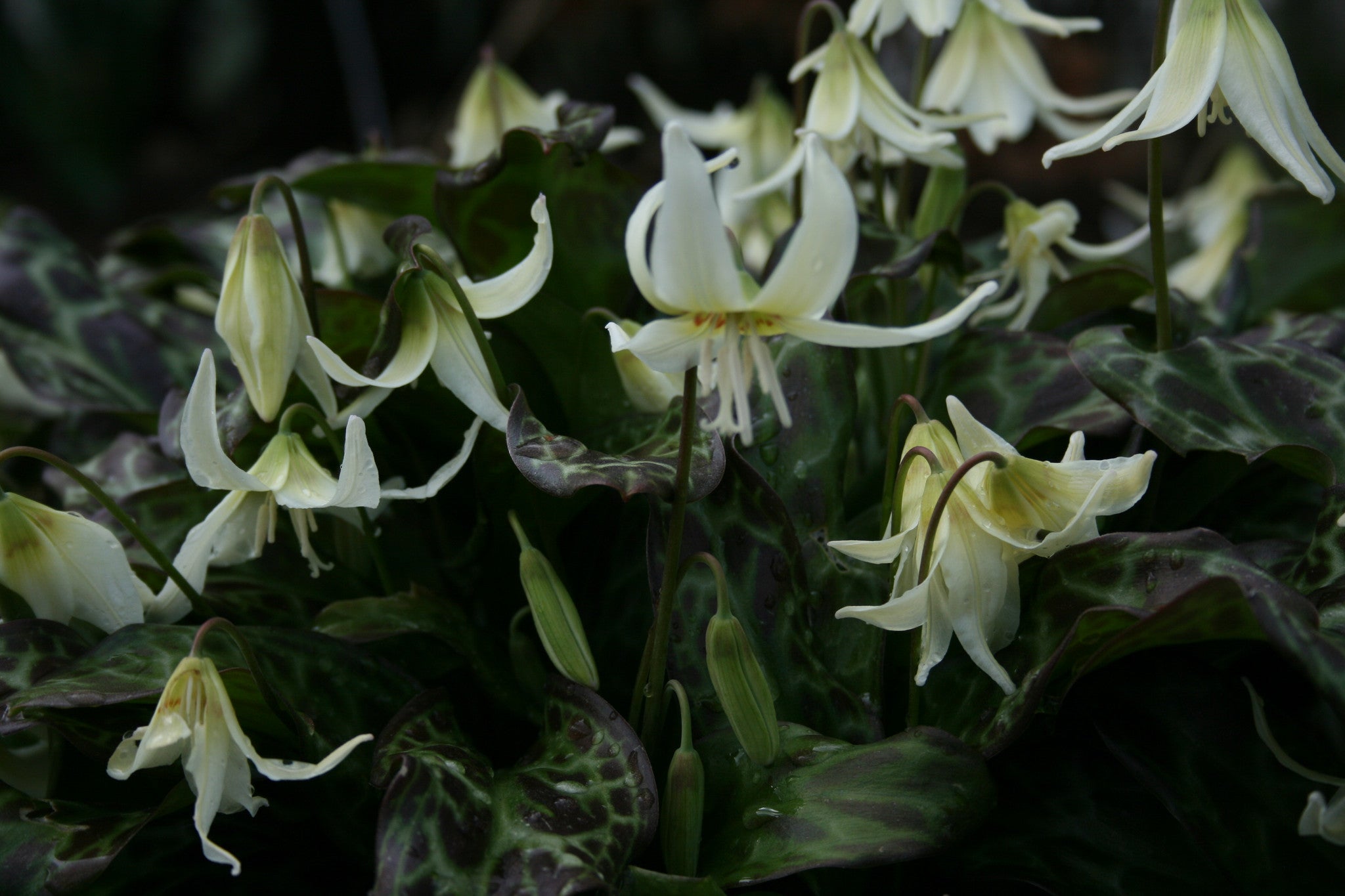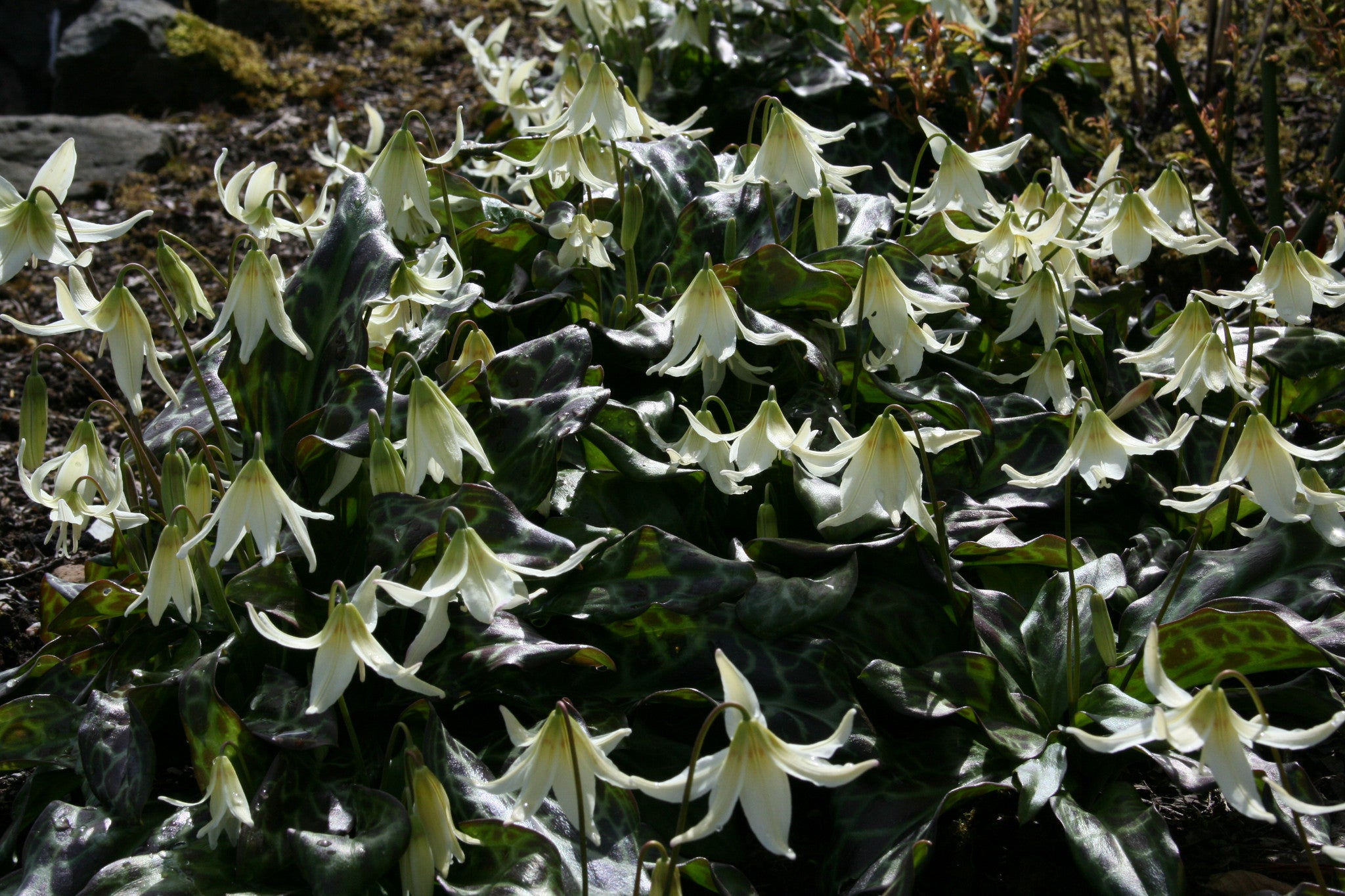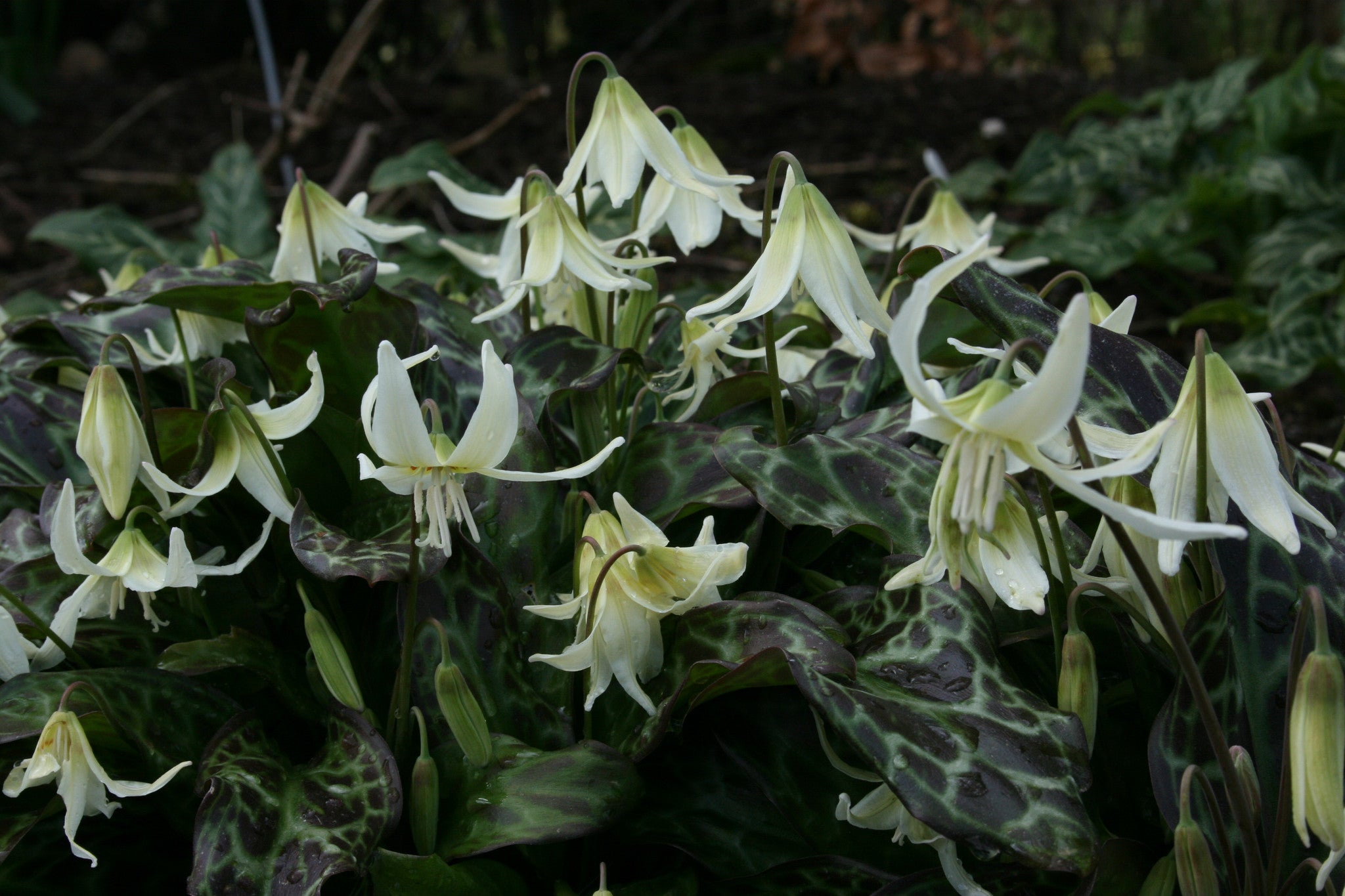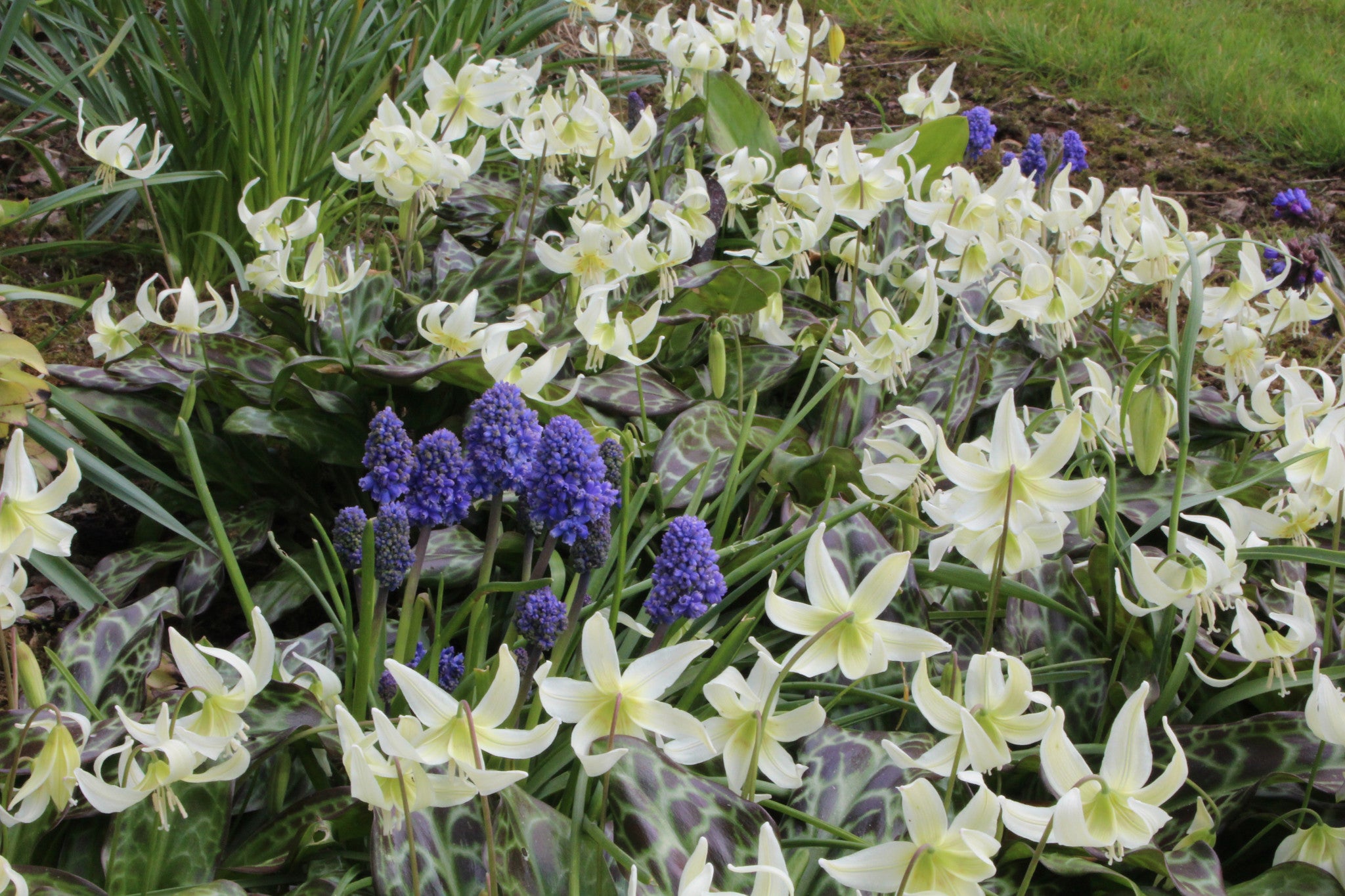Erythronium 'Sheer Delight'
Approx. 0.5 litre pot
About this cultivar:
Erythronium 'Sheer Delight' is a cultivar which was found in our garden. Everybody started asking for it - so we obliged, gave it name, and started to propagate it! Masses of delicate yellow-white flowers this cultivar also has spectacular foliage! A bit like Erythronium californicum 'White Beauty' but with extra special foliage and better (for us) performance in the garden!
- Position: Full sun, partial shade
- Soil: Almost any soil, grows well in Ballyrobert
- Flowers: April, May
- Other features: Grows well in Ballyrobert, Woodland Plant, Dappled Shade or Full Shade Loving
- Hardiness: Fully hardy - grows well in Ballyrobert!
- Habit: Clump forming
- Foliage: Deciduous
- Height: 10 - 25 cm (0.3 - 0.8 ft)
- Spread: 10 - 25 cm (0.3 - 0.8 ft)
- Time to full growth: 2 to 5 years
- Plant type: Herbaceous Perennial, bulb
- Colour: Green, yellow, white
- Goes well with: Shade, woodland or below hedges.
About this genus:
Erythronium (er-ith-ro-ne-um) is a genus of about 20 species that are member of the lily family (Liliaceae). They have quite a few common names such as fawn lily, trout lily, dog's-tooth violet and adder's tongue. The Latin name comes from the Greek word for red, erythros. Erythronium bulbs have had various uses over time- some species are edible and apparently tasty, however other species are slightly toxic and have been used as a contraceptive and emetic. However we use them in the garden!
Well known as woodland type plants they prefer shaded areas and will grow in almost any soil that isn't too wet or too dry. They are also well known for their tongue-shaped leaves; some are mottled with brown or purple trout-like spots, others are dappled with fawn-like white spots and some are plain green. All are beautiful!
Most Erythronium flower in early spring and go summer dormant, so don't worry when they disappear in July. They don't like being moved, so give them at least 3 years in each spot before transplanting! Not sure about companion pants, we grow most of ours in woodland or below hedges!








